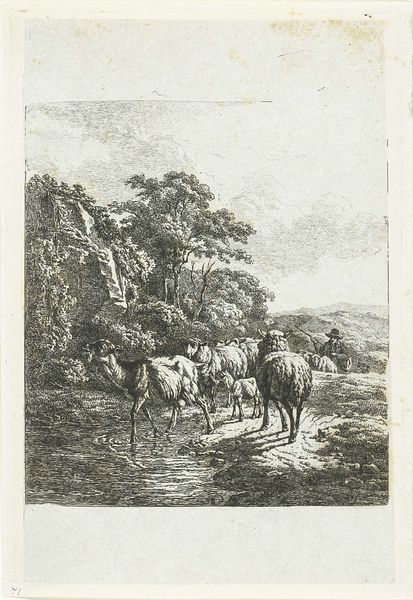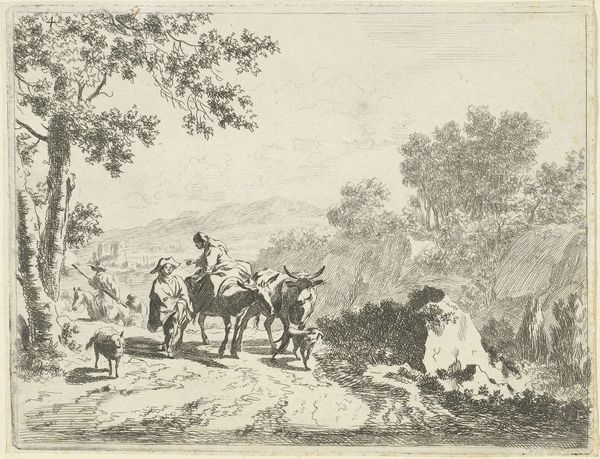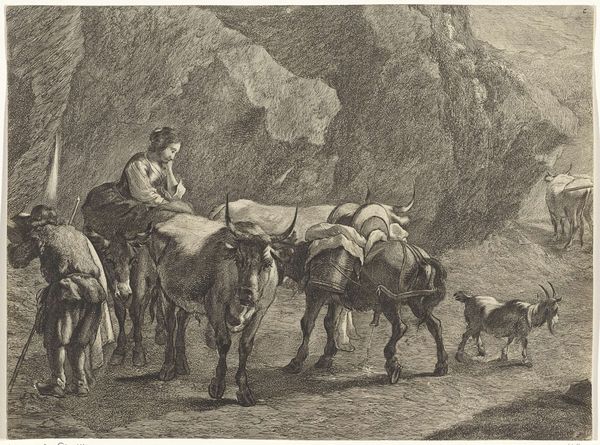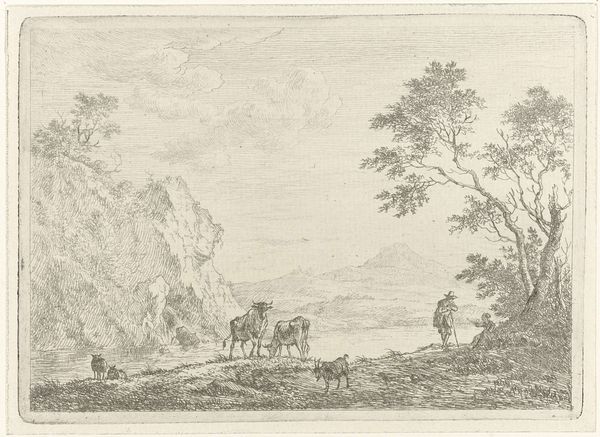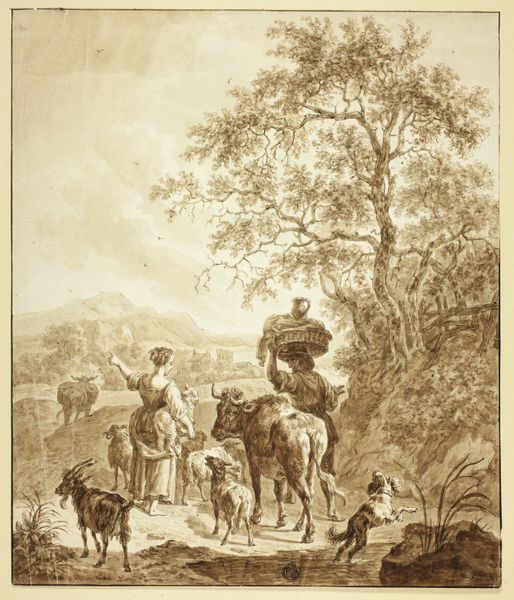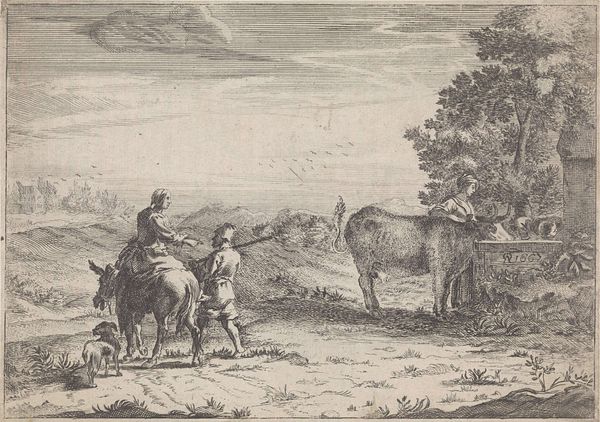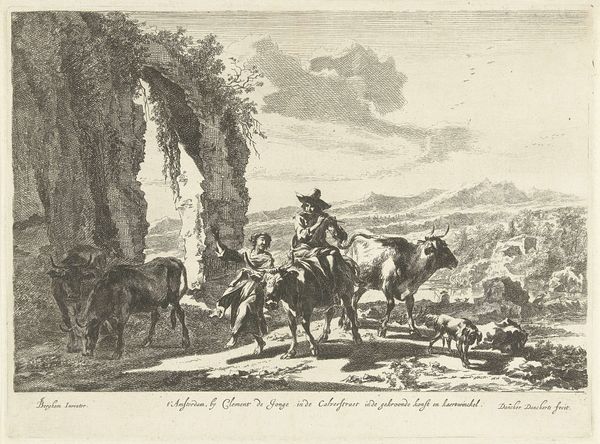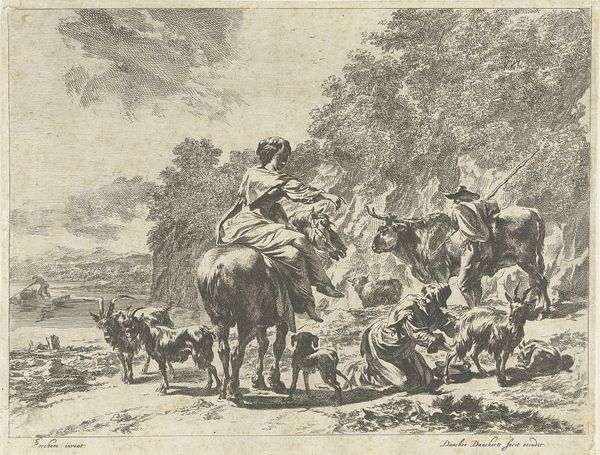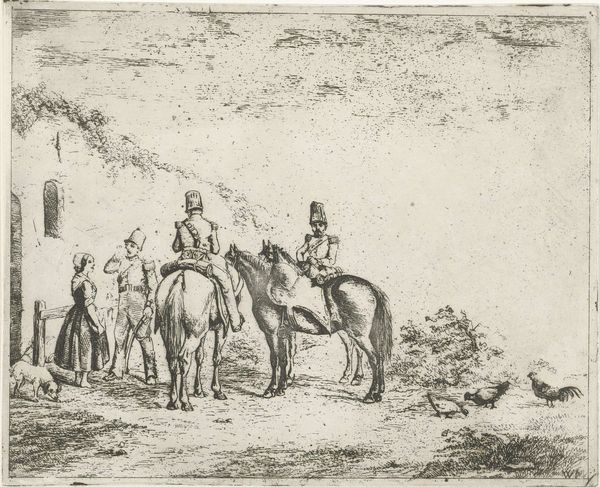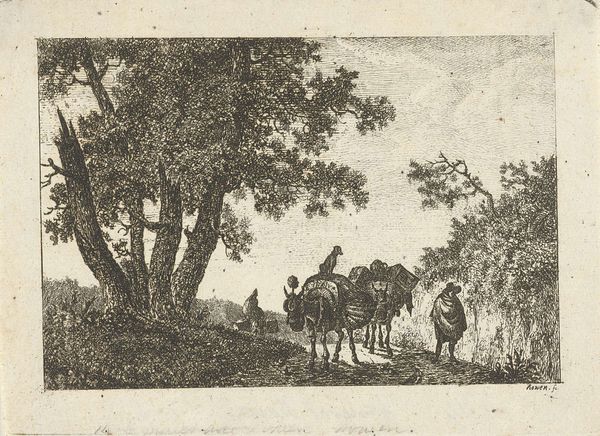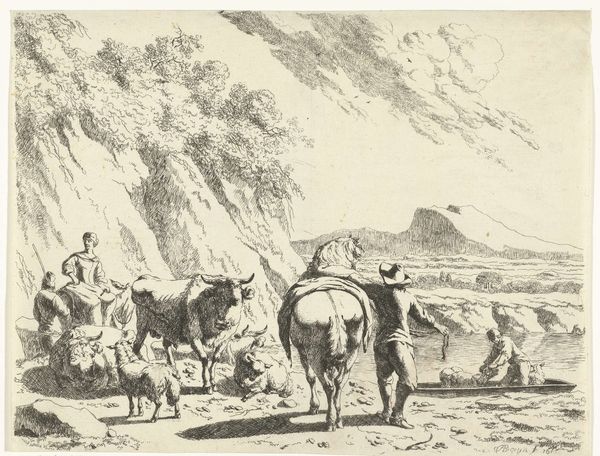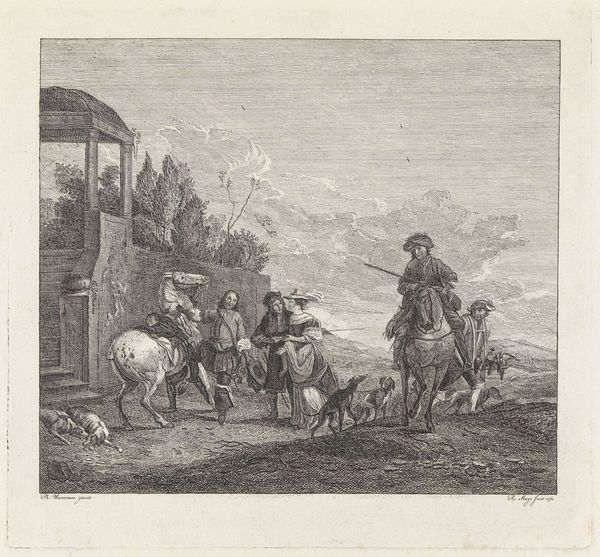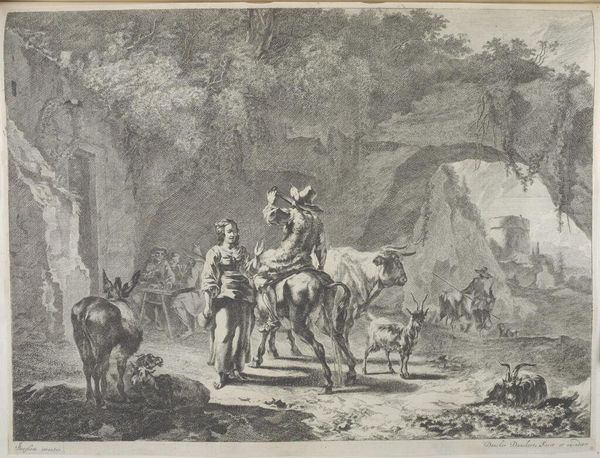
print, engraving
# print
#
landscape
#
figuration
#
romanticism
#
engraving
Dimensions: height 178 mm, width 255 mm
Copyright: Rijks Museum: Open Domain
Frédéric Théodore Faber created this etching, "Herders met kudde nabij grot," using a copper plate and etching tools. The etching process involves covering a metal plate with a waxy, acid-resistant layer, then drawing through the layer to expose the metal. The plate is then bathed in acid, which bites into the exposed lines. This process results in an image composed of fine, precise lines. Look at how Faber uses cross-hatching and varying line weights to create depth and texture, capturing the softness of the animals' wool and the roughness of the landscape. Etchings like this were often made in multiples, allowing for wider distribution of images. This print could have been acquired relatively inexpensively by someone wanting a visual reminder of pastoral life. The labor-intensive process contrasts with the scene it depicts: the relatively leisurely existence of herders in a rural landscape. By understanding the printmaking process, we gain insight into the artist's craft and the artwork's place in a broader social and economic context.
Comments
No comments
Be the first to comment and join the conversation on the ultimate creative platform.
